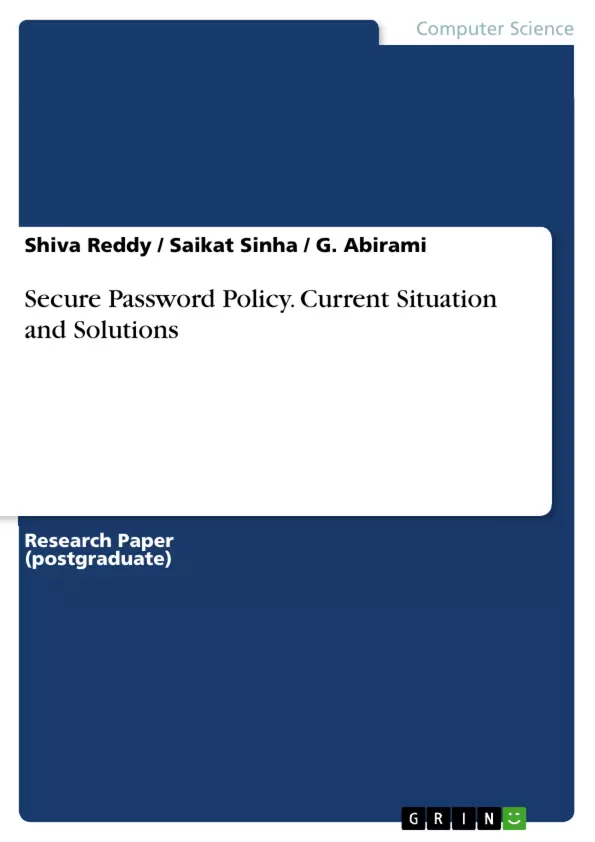Passwords are simple yet are also a critical component in most security systems. As the password needs to protect the user's secure information, it is required to be secure and make it hard for a third party to crack on to a system. It is therefore important to provide a best-practice password creation and management policy that may be universally used by everyone.
In this paper, we look at the most used password policies and practices and propose differences in the shape of our own new policy. Finally, we show visualized data and implementation of the password policy in real time.
Inhaltsverzeichnis (Table of Contents)
- I. INTRODUCTION
- A. Collecting and testing
- II. MEASURING PASSWORD STRENGTH
- III. RESULTS
- IV. MULTILINGUAL PASSWORD
- V. LOCATION BASED TRACKING
- VI. MULTIWAY AUTHENTICATION
- VII. RELATED
- VIII. CONCLUSION
Zielsetzung und Themenschwerpunkte (Objectives and Key Themes)
This paper explores the limitations of traditional password policies and proposes new, more robust security measures. The authors analyze leaked password databases to identify vulnerabilities and trends in password choices. They then discuss how to create a more secure password policy by implementing features such as multilingual support, location-based tracking, and multi-way authentication.
- Analyzing password vulnerabilities and trends
- Improving password security through advanced features
- Implementing multilingual support for password policies
- Enhancing security with location-based tracking and multi-way authentication
- Comparing traditional password strength metrics with modern password guessing attacks
Zusammenfassung der Kapitel (Chapter Summaries)
- I. INTRODUCTION: This chapter discusses the challenges of traditional password policies and the need for more secure methods. It highlights the reliance on textual passwords in critical systems like banking and social media, as well as the prevalence of leaked password databases.
- II. MEASURING PASSWORD STRENGTH: This chapter defines password strength and outlines various methods for measuring it. It discusses factors like password length, complexity, and resistance to brute force attacks.
- III. RESULTS: This chapter presents data analysis results from leaked password databases, including the most common passwords, usernames, and password patterns.
- IV. MULTILINGUAL PASSWORD: This chapter proposes using multilingual support for password policies as a way to improve security by making passwords more difficult to guess and crack.
- V. LOCATION BASED TRACKING: This chapter proposes using location-based tracking to safeguard user accounts by detecting unauthorized access from unfamiliar locations.
- VI. MULTIWAY AUTHENTICATION: This chapter explores multi-way authentication methods, such as OTPs, to further enhance security beyond traditional password logins.
- VII. RELATED: This chapter reviews previous work on password policy development and highlights the lack of standardized policies and multilingual password analysis.
Schlüsselwörter (Keywords)
This paper focuses on password security, vulnerability analysis, leaked databases, multilingual support, location-based tracking, multi-way authentication, traditional password strength metrics, and password guessing attacks.
- Quote paper
- Shiva Reddy (Author), Saikat Sinha (Author), G. Abirami (Author), 2017, Secure Password Policy. Current Situation and Solutions, Munich, GRIN Verlag, https://www.hausarbeiten.de/document/359321


